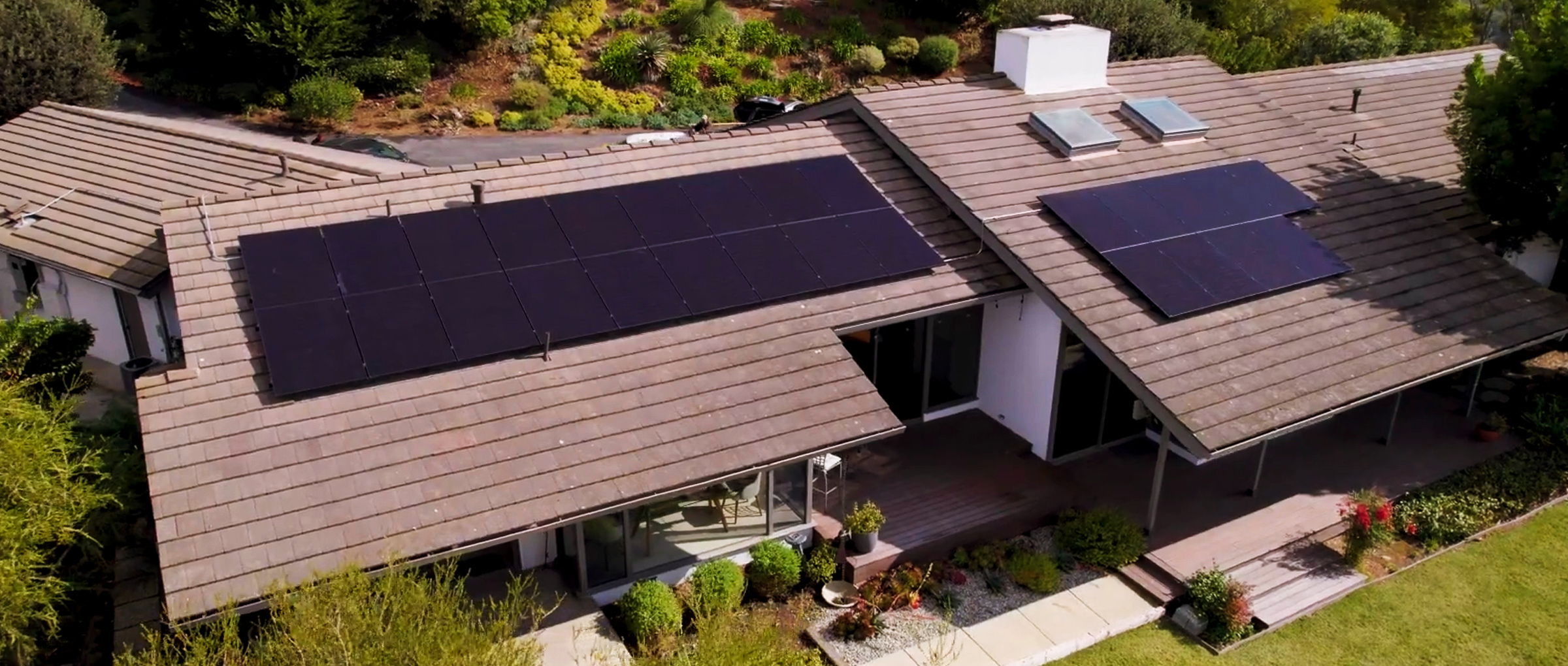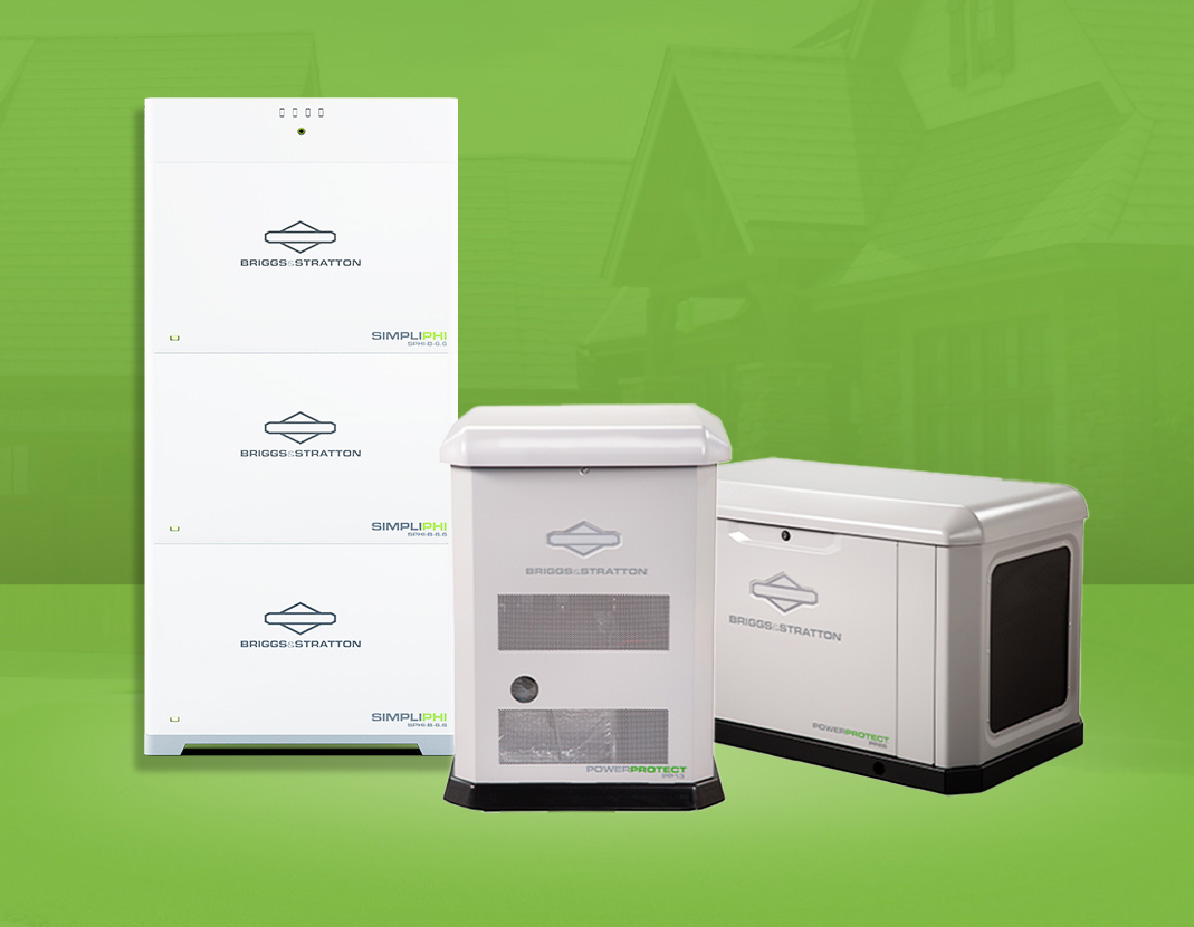According to Home Power Magazine, as of the 2020 survey, at least 180,000 families were living off the grid in the United States.
The off-grid housing market is experiencing significant growth, driven by a rising interest in sustainability and self-sufficient living. U.S. households are expected to move off-grid at a rate of 4.3% through 2028, according to SkyQuest research. This growth is fueled by an inclination towards minimalistic housing options that leverage renewable energy solutions to reduce environmental impact and promote energy independence. Off-grid living typically involves using renewable energy technologies like solar panels, wind turbines, and hydroelectric power systems, allowing residents to meet their energy needs without relying on traditional public utilities. The off-grid solar energy market alone is predicted to grow to 16.23 GW capacity. The financial sector's growing support, including specialized insurance packages for off-grid homes, further boosts the market's expansion.
Image Source: Mordor Intelligence
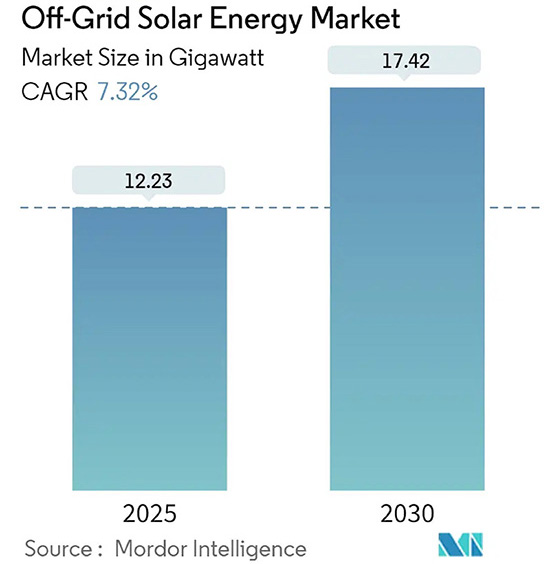
What does going off-grid mean?
Going off the grid directly means unplugging from the grid, meaning you cannot, or choose not to, receive service from a public or privately owned utility, whether that be water, gas, or electricity, to support your life and your home. Instead, the need to sustain your lifestyle is guided by your off-grid plan and the choices within that plan to keep you and your family fed, sheltered, and hydrated. Since there are many options for the factors that go into off-grid considerations, your plan becomes your holy grail.
In an interview with Hoss Boyd conducted for this guide, co-author of the book Aggie' n Arkie OTG Energy Guide, Hoss emphasized the most crucial part of going off-grid was the first step, the planning stage. Planning is where you will work out any hiccups, where you will very diligently calculate your energy needs, create a plan for your food and sustenance, decide on your water and wastewater technologies, and plan the structure and layout of your off-grid home to be as efficient as possible. Finally, it's the planning stage where you will consider the lifestyle you want and the one you can manage the best because living off-grid can range from rustic (living with "less" and having a lighter footprint) to living a lifestyle that is more high tech with advancements and more digital conveniences that ease the burden. Either path you take, the planning stage is where you will create the realization for the lifestyle you want to live.
We also spoke to an off-grid family, Ellie and Jacob, who recently upgraded their previous lead-acid battery system to the Briggs & Stratton SimpliPHI 6.6 Battery System and PowerProtect 13kW Standby Generator. When asked what their number one advice was for anyone deciding to go off-grid, they had a similar sentiment, "Plan your journey as meticulously as possible." Their previous system didn't allow any upgrades or new appliances to be added to it. This is why they recommend thorough planning - not just what you want in the near future but also looking ahead and thinking about what appliances or home upgrades you may wish to adopt in the future so that when you conduct your energy plan, you're accounting for those upgrades now. Ellie and Jacob are very happy with their upgraded, off-grid system and said their favorite part is the brighter lights and using appliances without worrying about running out of energy. The top reason they like being off-grid is that they love not having an energy bill. So they’re able to manage their energy needs and regulate costs.
While going off-grid might not be for everyone, knowing why people go off-grid helps determine if some of those values align with your and your family's. Here are some of the biggest reasons people decide to live an off-grid lifestyle.
Benefits of going off-grid
Self-sufficiency The ability to fulfill one's needs independently without reliance on external systems is a powerful feat. Self-sufficiency encompasses skills that ensure an individual or community can provide for its own food, energy, water, and other essential needs. Self-sufficiency enhances independence, financial stability, environmental responsibility, feel more connected with nature, personal health, and overall quality of life. It requires commitment and effort but can also garner a rewarding return.
Saving money While the initial investment to go off-grid will have to be budgeted out compared to the long-term, unpredictable costs of energy, food, clean water, and waste disposal, the average person will save money in the long run. Even if you have a high energy load, that investment will be paid for upfront with solar, batteries, and other energy support systems rather than a consistently high utility bill.
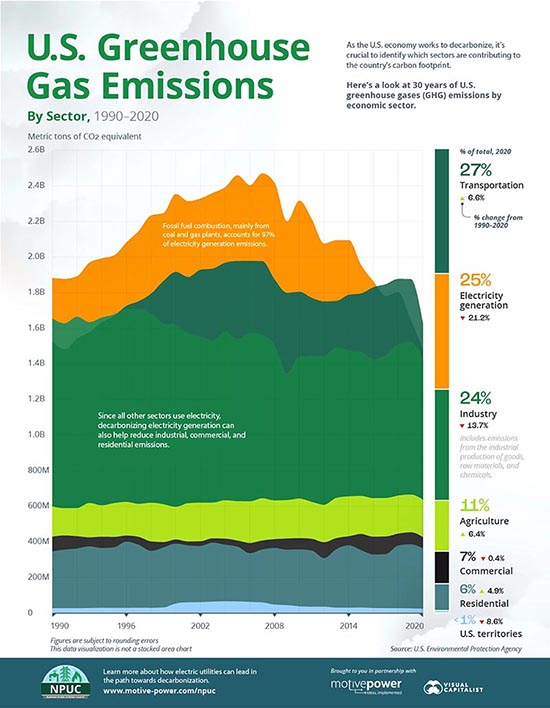
Prepared in case of emergency
People who go off-grid and create their own living ecosystem for food, water, and energy acquisition are more prepared for handling a natural disaster, economic downturn, or social disruption. When the grid goes down or there are food supply chains or water supply issues, being self-sufficient means you have created access to these items for yourself. Knowing how to test and clean your own water, grow or preserve your own food, and produce and store your own energy are skills that help individuals and families survive.
Lower carbon footprint
The second-greatest source of greenhouse gas emissions in the U.S. is electricity generation, after transportation. While residential is one of the smallest portions of the GHG pie, at just 4.6%, the decision to live off-grid lowers a family’s carbon footprint contribution to the larger picture.
No utility bills
Beyond saving money and not having a utility bill that fluctuates and garners new fees at the utility’s whim, you can control your energy costs by not having a utility bill. When connected to the grid, you don’t have to budget your energy in the same way. You can technically run any device as long as you want and add more devices or appliances at any time, but you will be billed for them accordingly. When going off-grid, you will have to budget your energy. Still, you will have technically already paid for the mechanism that harnesses energy and stores it, so there are no new surprise costs, unexpected fees, or TOU rates that will affect your wallet.
There are six major considerations to add to your plan. They are:
Geographic location
Your build
Energy
Water source
Food sources
Wastewater technologies
We will explore these areas of consideration and provide some of the optimal options that experts like Hoss Boyd recommend to his clients who go off-grid.
Making the plan to go off-grid
In his book, co-written with Kerena Reese, President and CEO of TeraVolt Energy, and Off-Grid expert, Hoss Boyd discusses the bigger picture plan everyone considering the off-the-grid (OTG) lifestyle must address. Hoss explains the way to begin considering your plan is by addressing the following three areas that are particular to you and your needs.
Essentials (food, water, wastewater)
Important needs (refrigerator, washer)
Like-to-haves (TV, dryer, dishwasher, etc.)
From this basis, you can begin determining what your OTG lifestyle looks like. These early decisions will help you understand how much power you’re going to need. Also, think of how long you will live this lifestyle. As you and your family age, additional considerations may be made, like backup generation for medical equipment or refrigeration for medication if you live far from a pharmacy or hospital.

Decide on your land and location
Selecting the right location is fundamental. Opting for regions with mild weather will help steer away from certain extreme conditions, as they reduce the burden on heating, cooling, and agricultural needs. It may be in your best interest to avoid areas prone to severe weather, such as tornadoes, hurricanes, wildfires, and earthquakes.
Soil quality is vital for farming your food. Ensure the soil is fertile and suitable for growing crops by testing its composition and nutrient levels. The Farmer's Almanac recommends testing your soil in spring or fall, measuring its basic texture—sand, silt, or clay—and determining its pH level. This helps ensure your plants can absorb essential nutrients like phosphorus and iron. Regular soil testing every 3 to 5 years can reduce reliance on fertilizers, as starting with healthy soil minimizes the need for additional amendments. While home test kits are available, professional testing through your local county extension office offers more accurate results. Understanding your soil's condition enables you to make informed decisions to improve its health and support optimal plant growth.
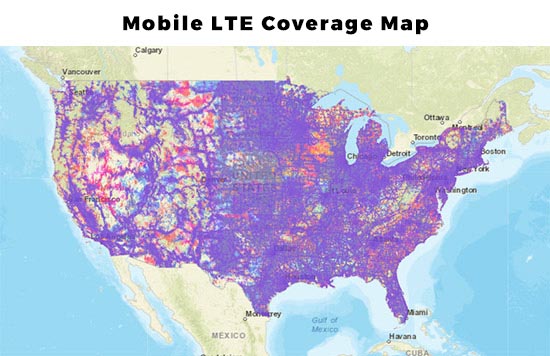
Access to reliable communication is essential for staying connected, especially in emergencies. Satellite communication can be particularly useful in remote areas. The following clickable map by the Federal Communications Commission shows cell coverage by the carrier. You can use this to help determine if a particular zip code on the land you're looking at has coverage.
Understanding local weather conditions is crucial. Regions with balanced dry and rainy seasons are ideal. Also, consider the impact of snowfall and plan for periods without sunshine if relying on solar power. Research potential natural hazards to avoid areas with a high risk of natural disasters like tornadoes, hurricanes, wildfires, and earthquakes. The National Oceanic Atmospheric Administration is a great resource for understanding weather patterns, climate predictions, and storms.
Image Source: FCC

Rating a location on the zoning and legal considerations helps ensure off-grid living is allowed. Some regions have specific regulations that may restrict off-grid constructions or require special permits. Investigate possible nearby contaminants that could affect water and air quality. Proximity to industrial sites, landfills, or agricultural runoff can pose health risks. Since regulations vary locally and by state, here are some of the most OTG-friendly locations rated by the World Population Review.
Planning for autonomous days is essential. Ensure you have alternative power sources like wind turbines or generators to manage days when solar power may be unavailable due to cloudy or rainy weather.
Additionally, ensure the property is accessible year-round via roads, trails, and driveways to facilitate easy access regardless of the season. By considering these factors, you can set a solid foundation for a successful off-grid living experience.
Image Source: World Population Review
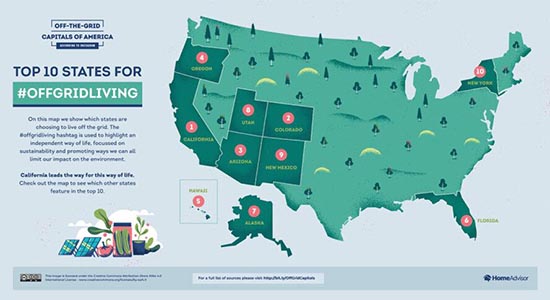
Best states for off-grid living
Research indicates that California, Oregon, New Mexico, Utah, Arizona, Nevada, Hawaii, Florida, Alaska, and New York are some of the best states for off-grid living in terms of weather and laws. These states often offer favorable climates, legal frameworks, and resources conducive to off-grid living.
Image Source: OTG Living

Your Build
Once you’ve narrowed down your location, it’s time to plan out the building of your home structure. The primary goal is to design a small, energy-efficient home to keep your energy demand to a minimum.
Building small and efficient is crucial. The smaller your home, the less energy you’ll need to heat and cool it. A compact design reduces the amount of materials required, making it both cost-effective and environmentally friendly. According to the U.S. Green Building Council (USGBC), smaller homes are inherently more energy-efficient and have a smaller carbon footprint. The USGBC has a guide for those who want to follow the steps necessary to build a single or multi-family green home and have it LEED Certified. The steps include:
Connect with a Green Rater organization.
Choose the appropriate rating system.
Check project eligibility.
Define the LEED project scope.
Develop a LEED scorecard and preliminary rating.
Assign roles and responsibilities to the project team.
Develop consistent documentation.
Schedule site inspections for verification.
Green Rater review and submit to USGBC for certification.
Even if getting residential LEED certification isn’t a goal, following the guidelines for building an energy-efficient home in accordance with the USGBC points system can help guide your build in the right direction.
Utilizing outdoor spaces effectively can reduce indoor energy usage. Design your home to maximize the use of outdoor areas. Hoss Boyd says, "To save energy, get outside." Anywhere you can make a functional living space outside will help ease your home's energy demand. Covered porches, patios, and decks extend your living space without the need for additional heating or cooling. Hoss suggests that creating multifunctional outdoor spaces can reduce indoor energy usage by providing natural shade and ventilation. He especially promotes the idea, depending on your climate, of creating an outdoor kitchen; as kitchens have a high energy demand when placed inside the home, it can also be quite enjoyable.
Roof design for airflow is essential for maintaining a comfortable indoor climate. Proper ventilation is crucial for maintaining a healthy and energy-efficient home. There are several methods to ventilate a home effectively. One of the best roof designs for airflow is the asymmetrical roof, which allows hot air to flow upward and escape while allowing cooler air to enter lower levels of the home. Here are some other ventilation strategies for reducing heating and cooling needs.
Natural ventilation relies on design features like solar chimneys, which use the sun to heat air, making it buoyant so it rises and exits through vents, drawing fresh air in.
Exhaust-only mechanical ventilation uses fans, typically in bathrooms, to remove stale air and moisture, creating negative pressure that pulls in fresh air through leaks or intentional inlets. In contrast, supply-only ventilation brings in fresh air using a fan, which pressurizes the house and helps keep out radon and other soil gases but can risk moisture issues in walls and ceilings.
Balanced ventilation systems, which use separate fans for incoming and outgoing air, provide better control over where fresh air comes from and where exhaust air is removed. The most advanced option, balanced ventilation with heat recovery, uses a heat-recovery ventilator (HRV) or energy-recovery ventilator (ERV) to exchange heat between incoming and outgoing air, minimizing energy loss. This method is highly recommended in colder climates to maintain energy efficiency. Ultimately, the best ventilation strategy depends on your home's specific needs and climate conditions.
Effective ventilation is key to reducing reliance on mechanical air conditioning. Using cross and stack ventilation to enhance airflow and strategically place windows and vents creates natural air circulation, reducing reliance on mechanical air conditioning. According to Green Homes, operational windows (rather than fixed picture windows) allow for better ventilation control and improve indoor air quality.
Optimal window placement can maximize natural daylight and take advantage of prevailing winds. Position windows to harness natural daylight and prevailing winds. South-facing windows capture maximum sunlight during the winter months, while north-facing windows provide consistent, indirect light that avoids overheating in the summer. The U.S. Green Building Council advises on window orientation as a critical factor in passive solar design.
Ceiling fan installation helps maintain air circulation. Set fans to rotate counterclockwise during the summer to push cool air down. In the winter, reverse the direction to clockwise to distribute warm air that rises to the ceiling. The American Society of Heating, Refrigerating, and Air-Conditioning Engineers (ASHRAE) supports the use of ceiling fans for efficient climate control; they are an excellent tool for heating and cooling by moving air in the correct direction.
High-quality insulation is essential for maintaining temperature control. Ensure your home is well-insulated to maintain temperature control. Using high-quality insulation in walls, roofs, and floors is essential for keeping heat out during summer and retaining warmth in winter. The Green Building Advisor recommends materials with high R-values for optimal thermal performance, based on your building codes.
Sustainable building materials can enhance energy efficiency and reduce environmental impact. Choose materials with good thermal mass properties, such as stone, brick, or concrete. These materials absorb heat during the day and release it slowly at night, helping to regulate indoor temperatures. The Green Building Council endorses the use of sustainable building materials to enhance energy efficiency and reduce environmental impact.

Landscaping to support energy efficiency
According to the Arbor Day Foundation, carefully positioned trees can reduce a household's energy consumption for heating and cooling by up to 25%. Planting trees for shade and windbreaks can support energy efficiency. Deciduous trees planted on the south and west sides of your home provide shade in the summer, reducing cooling costs. These trees lose their leaves in the winter, allowing sunlight to warm your home. Evergreen trees planted on the north and northwest sides act as windbreaks, reducing heating costs by blocking cold winds.
Creating microclimates with shrubs and bushes can help insulate your home and reduce energy usage. Use shrubs and bushes to create microclimates around your home. Plant dense shrubs near the foundation to insulate your home by reducing wind exposure and preventing heat loss. The ASLA recommends using native plants adapted to your local climate, as they require less water and maintenance and support sustainable landscaping practices.
Incorporating green roofs and walls can provide natural insulation, reducing the need for artificial heating and cooling. These features also absorb rainwater, reduce runoff, and provide habitat for local wildlife.
Designing with water conservation in mind is critical for sustainable landscaping. Implement xeriscaping principles to reduce water usage. Choose drought-tolerant plants and use mulch to retain soil moisture. Collect rainwater in barrels or cisterns for irrigation. The Environmental Protection Agency (EPA) endorses rainwater harvesting as a sustainable practice that conserves water and reduces strain on local water supplies.
Utilizing permeable paving can improve groundwater recharge and reduce stormwater runoff. Use permeable paving materials for driveways, walkways, and patios to reduce stormwater runoff and improve groundwater recharge. Permeable pavers allow water to infiltrate the ground, reducing erosion and supporting healthy soil.
Implementing edible landscaping supports self-sufficiency and reduces reliance on external food sources. Incorporate edible plants into your landscape to support self-sufficiency. Plant fruit trees, berry bushes, and vegetable gardens to provide fresh produce and reduce reliance on external food sources. Raised garden beds and vertical gardens can maximize space and improve accessibility. The National Gardening Association (NGA) promotes edible landscaping as a way to connect with nature and enhance food security.
Promoting biodiversity through thoughtful plant selection enhances the resilience and health of your landscape. Design your landscape to promote biodiversity by including a variety of plants that attract pollinators, birds, and beneficial insects. Biodiverse landscapes are more resilient and require fewer chemical inputs. The ASLA emphasizes the importance of biodiversity in creating sustainable and healthy landscapes. You can use the Native Plant Finder to locate the best native plants for your area when planning your landscape design.
When planning your OTG home build, the resources shared offer many unique ideas. Adding small touches to your plan now can lead to significant rewards later, such as reduced heating and cooling needs. Simple additions like planting an apple tree can provide the joy of picking fresh fruit from your yard a couple of years later. The more thoughtful your planning is today, the greater the benefits you'll enjoy as you live the OTG lifestyle.

Energy Sources & Storage
When planning to go off-grid, you’ll start by determining your energy needs and budgeting for their use once your system is in place. You'll have various options for energy production and storage. The optimal setup includes a renewable energy source like solar, an inverter capable of handling your full load, a battery storage system to provide power at night and when solar isn't producing, and additional electricity sources to power your home and charge the battery.
While there are many sources of energy and backup power options to choose from, the most common and mainstream setup is solar, battery storage, and a generator. While these technologies have come down in cost over the years, the initial investment in going totally off-grid is still one of the greatest costs.
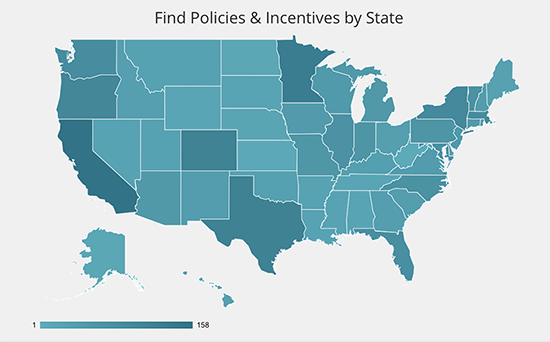
Here are the steps in addressing your off-grid energy needs:
List all your essential energy needs, such as heat pumps, appliances, lights, ceiling fans, electronics, water pumps, and entertainment devices requiring electricity.
Calculate your energy and power demand, making sure to account for future energy needs.
Understand how many hours of peak sunlight you receive.
Determine how much solar, inverter size, and battery storage capacity you will need, and understand the cost to install and the incentives available to you. Consider emergencies and any additional power you may need, like a whole-home generator.
Since an energy installation system is electrical, be sure to hire a professional installer who will walk you through the process and help you set up your energy loads and battery storage settings correctly.
Execute your plan.
You can review your potential incentives by visiting the DSIRE website and entering your zip code.
Off-grid Solar
There are some intricacies of having solar off-grid. For one, you don’t have to worry about the grid going down and impacting your electricity. You won’t have the ability to jump to the grid when the sun goes down, or there are days without enough sun for solar power.
Battery Storage
Battery storage is a must for those living off-grid. Calculate your autonomous days, which are the estimated days without enough sun to generate power. That will determine how much battery storage you want to incorporate. Learn more about Briggs & Stratton Home Battery Backup Packages. These are the same off-grid battery solutions Ellie and Josh stressed.
Inverter
The total wattage of your power demand and the battery capacity will also determine your inverter choice. You'll also want to consider the inverter's efficiency rating to help reduce energy loss. While the Briggs & Stratton Energy Solution Battery Storage Systems are brand agnostic when it comes to inverters, we often recommend the industry leading Sol-Ark Inverters. In particular, the SimpliPHI® 6.6 Battery System features a brand parking with Sol-Ark inverters.
Generator
A whole house off-grid standby generator is meant to run essential items. Do you want to be comfortable, have hardly anything to set up, and have the most power during blackouts? Need to power an off-grid location where the power lines don’t reach? Whole home generator units are designed to accomplish exactly that. Run important items such as a well pump, fridges, freezers, fans, lights, portable/window A/C units, CPAP, oxygen concentrator, TV, wifi, security, microwave, coffee maker, instant pot, crock pot, food dehydrator, and much more. Learn more about Briggs & Stratton PowerProtect Generator options for securing your off-grid backup power.
Energy independence means energy responsibility
Off-grid systems require regular maintenance to stay efficient. This includes cleaning solar panels, checking battery health, and possibly replacing specific components over time. While the initial investment for an off-grid system may be higher, over time, the savings on energy costs and the benefits of energy independence often outweigh the upfront costs. Factor in potential future expenses for maintenance and upgrades as part of your long-term planning.
Energy equipment warranties
When setting up your off-grid energy system, paying attention to the warranties on your equipment is essential for ensuring long-term reliability and peace of mind. Strong warranties reflect the manufacturer's confidence in their products and provide you with crucial protection against potential issues. Solar panels often come with 15 to 30-year warranties, covering product defects and performance degradation over time. Battery storage systems, vital for storing energy during non-sunny periods, typically offer warranties of around ten years, ensuring they maintain a certain capacity over time.
Inverters, which convert solar energy into usable electricity, usually come with 10 to 12-year warranties, while generators, often used as backup power sources, offer coverage for up to 7 years. When evaluating these warranties, it's important to consider what is covered, such as parts, labor, and performance, and to understand any conditions that might affect the warranty's validity. By choosing equipment with strong warranties from reputable manufacturers, you can secure your investment and enjoy reliable off-grid power for years.

Water generation options
When living off-grid, you will need to consider your water options. Taking water needs into your own hands requires careful planning. One of the most common choices is digging a well. You will need to consult your state's recommendations for a private water well. You can refer to the Private Water Well Program according to your state, which can be found here.
More generally, constructing a well for your home involves several steps to ensure you have a reliable and safe water source. Here are the simplified steps to help you through the process:
Plan your well location
Start by deciding where to drill the well. The location should be far from sewer lines and ideally over an aquifer with a good water yield. Since well drilling can be a significant investment, careful planning is crucial.Obtain necessary permits and review regulations
Before drilling, you'll need to secure the appropriate permits from your local or state authorities. Regulations for well drilling can vary, so check with your municipal office to understand the specific requirements in your area.Conduct geographical and geological tests
It's essential to conduct tests to determine the nature of the aquifer. Aquifers can be confined or unconfined, with confined ones being harder to access. Reviewing geological maps and records of previously drilled wells can provide valuable insights into the best locations for drilling.Evaluate your water needs
Calculate how much water your household will need daily. This will help you determine if the aquifer you're considering can supply enough water. Keep in mind that additional water may be required for lawns, gardens, or farming, especially in areas with low rainfall.Choose a reputable well construction contractor
Research and select a licensed contractor with experience in well drilling. Ensure they have the necessary equipment and knowledge, including the ability to repair pumps. A reliable contractor should also provide a detailed construction plan, including information on the well's depth, diameter, and materials.Review and finalize construction plans
Your contractor should give you a comprehensive plan that outlines all aspects of the well construction. This plan should include the expected timeline, the materials to be used, and details about the well's components.Understand the costs involved
Well construction can be expensive, with costs varying for different components. It's advisable to consult multiple contractors to get a clear understanding of the market rates. While price is important, reliability and quality of work should be your primary concerns.
Well pumps need electricity
Once you have a well, you can choose to use an electric pump, which you will need to calculate into your energy budget. Or, you can use an independent solar-powered system for your well, which requires a solar panel to pump the water but will also need storage for pumping on autonomous days and nights.
Atmospheric water generation
Atmospheric water generation (AWG) is another approach to sourcing water by collecting it directly from the air. It offers a unique solution in the face of global water scarcity, where well water is not an option. This technology captures water vapor in the air, converting it into drinkable water. The process can be made more efficient by integrating solar panels with small-scale generators. One of Hoss Boyd’s favorite water harnessing setups is an AWG system powered by solar and backed up with a Little Genny, making it an energy-efficient option.
AWG systems utilize various strategies to enhance water collection, including optimizing the surface materials for better condensation and employing cooling techniques to increase water capture. Some systems also use advanced sorbents to pull water from the air more effectively. These technologies incorporate biomimicry as they are inspired by natural processes.

Water purification
When living off-grid, ensuring that your water supply is safe to drink is crucial, and installing a water purification system is the most effective way to achieve this. Water purification involves:
Several steps, including sedimentation, which allows large particles to settle.
Filtration, which removes smaller particles for clearer water.
Chlorination, which kills harmful bacteria.
These processes work together to eliminate sediments, pathogens, and minerals from your water, making it safe and drinkable. Some off-grid systems, like those offered by Berkey, go a step further by removing metals, PFAS, and toxins without the need for electricity, functioning as standalone water dispensers. Implementing a quality purification system allows you to enjoy clean, safe water directly from your well or other off-grid sources.

Septic and waste disposal
Potable water comes from either surface water, such as rivers and lakes, or groundwater, drawn from wells beneath the water table. It must meet the needs of municipal, institutional, and industrial users. Before distribution, this raw water undergoes treatment to remove contaminants through processes like filtration, sedimentation, coagulation, softening, iron removal, and disinfection. Once treated, the water is transported through a distribution system, typically consisting of a network of pipes made of iron, steel, or PVC, which helps prevent contamination. The flow of water within this system is controlled by pressure pumps or gravity, ensuring it reaches users safely and efficiently.
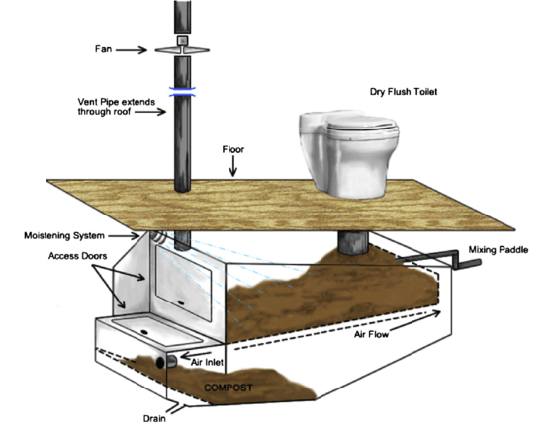
Composting Toilets
Choosing the proper toilet is crucial for maintaining sanitation and sustainability without relying on public utilities when going off-grid. A composting toilet is an excellent option for off-grid living, as it processes waste naturally, turning it into compost that can be used safely in gardens. These toilets don’t require water or electricity, making them ideal for remote locations and tiny homes.
Composting toilets are designed to reduce the need for water and eliminate the risks associated with traditional septic systems. Modern composting toilets are efficient, easy to maintain, and often odor-free, providing a hygienic and sustainable solution for waste management.
Image Source: Composting toilets as a sustainable alternative to urban sanitation - A review
Septic System
A common solution to handling waste off-grid is installing a septic system. There are various considerations, but the general steps for incorporating a septic system are as follows:
Site preparation
Evaluate the site’s soil type, size, and water table to determine the best septic system, possibly requiring a percolation test.Health approval
Obtain necessary permits and approvals from local health authorities.Excavation
Dig and prepare the site according to the septic system’s specifications.Installation
Install the septic tank and connect it to the drain field, following precise guidelines.Final inspection
Have a professional inspect the installation to ensure compliance with safety standards.Cover and maintenance
Cover the system and commit to regular maintenance to ensure longevity.
Minimizing trash & trash burning
Removing the convenience of city-hauled trash involves planning what waste you bring into your home and how it leaves. Some tips include minimizing the waste coming in, choosing the best materials that can be easily handled, and handling food waste when excess is prepared.
Reduce unnecessary packaging
Start by refusing to bring unnecessary waste into your home. Opt for products with minimal or no packaging, buy in bulk for less packaging, and bring your own reusable containers when shopping. This simple step can help reduce the amount of waste you need to manage.Choose packaging materials wisely
Identify local recycling facilities where you can drop off your recyclables without incurring extra costs. Separate your recyclables into categories like metal, plastic, and paper, and consider ways to reuse materials before recycling them. For example, cardboard can be used in gardening, and certain items like milk jugs or egg cartons might be useful for craft projects at local schools. Earth 911 can help you locate your local recycling facilities.Compost food waste
Food scraps should never end up in the trash. Composting can turn organic waste into valuable fertilizer for your garden. Avoid composting items like meat, fats, and sugary foods that could attract pests. Depending on your living situation, you can choose from various composting methods, such as using a compost bin in urban areas or creating a simple pit or surface compost system if you have more land. You can use the EPA guide for more detailed steps on setting up a home compost system.

Creating a food plan
When planning for long-term food storage as part of your off-grid lifestyle, it's essential to focus on building a robust emergency food supply that can sustain you through various situations. Start by assembling a disaster supply kit, including essentials like medical supplies, hygiene products, and tools. Regarding food, prioritize stocking bulk staples such as wheat, corn, beans, and salt, which can last years when stored properly. Complement these staples with various canned goods, freeze-dried foods, and packaged mixes to ensure a diverse and nutritious diet.
For effective storage, keep all dry goods in clean, dry, and dark places, away from moisture and temperature fluctuations. Grains, especially, should be stored in food-grade containers and may require treatment to prevent insect infestation. Regularly rotate your stock, using perishable items first, followed by frozen foods, and finally, non-perishables. Including vitamin and mineral supplements in your stockpile can help fill any nutritional gaps. By carefully planning and maintaining your food supply, you can ensure long-term preparedness and resilience in an off-grid environment.
Food preservation strategies
Refrigeration is a relatively low-energy appliance, but its high energy usage is due to its running 24-7. When it comes to food choices, Hoss Boyd recommends exploring food preservation options before refrigerators. When choosing your food system, opt for an energy-efficient refrigerator and consider preservation alternatives that don’t require a refrigerator. Here are some food preservation areas to explore when strategizing your off-grid food plan.
Smoking
A slow process that uses smoke to naturally preserve meats, fish, and certain vegetables. Cold smoking dries the food slowly, while hot smoking cooks and preserves the meat.Salting
This method involves rubbing food with salt or submerging it in a salt brine, dehydrating and preserving it by killing microbes.Underground fridge
Burying a fridge or container underground uses the earth’s natural insulation to keep food cool.Canning
This is a time-tested method that involves sealing food in jars after heating it to kill bacteria, extending its shelf life for months or years.Dehydrating
Removes moisture from food using the sun or a dehydrator, preserving it for extended periods.Freeze Drying
While energy-intensive, freeze drying preserves food for over 20 years, making it a valuable method if you have access to electricity.Oil Preservation
Cook food and store it submerged in oil, which acts as a preservative. This method is ideal for herbs, vegetables, and some meats.Honey Preservation
Honey’s natural antibacterial properties make it ideal for preserving nuts and fruits, though it’s a less common method.Liquor Preservation
Submerging fruits in alcohol, such as brandy, preserves them for several months while enhancing their flavor.Pickling
Preserving food in a solution of vinegar, water, salt, and spices not only extends shelf life but also adds flavor.
As you consider your off-grid journey, the best advice you can take is to make your plan meticulous. From securing your energy needs to ensuring a reliable water source, and from waste management to food preservation, each aspect requires careful thought and preparation for the best outcome. The experiences and insights shared by experts like Hoss Boyd and the practical advice from Ellie and Jacob serve as invaluable resources in guiding your off-grid aspirations.
Living off-grid is a lifestyle you choose; it’s a commitment to self-sufficiency and resilience. The freedom and independence that come with it are matched by the responsibility to maintain and optimize your entire system continuously. By thoroughly planning and preparing, you can create a sustainable and fulfilling off-grid life that meets your needs.
We extend our heartfelt gratitude to Hoss Boyd, Ellie, and Josh for their contributions to this guide. Their expertise and experiences offer a realistic and inspiring look into off-grid living, providing you with the knowledge and confidence to make informed decisions. Whether you’re just starting to explore the idea or are ready to take the plunge, remember that the foundation of successful off-grid living lies in thoughtful planning and preparation. Here’s to a future where you can thrive independently, harnessing the power of nature and your resourcefulness to create a self-sufficient and sustainable life.
Resources
- https://www.almanac.com/content/3-simple-diy-soil-tests
- https://www.usgbc.org/guide/homes
- https://www.usgbc.org/credits/ea51
- https://www.climate.gov/maps-data/dataset/extreme-weather-records-state-data-table
- https://fcc.maps.arcgis.com/apps/webappviewer/index.html?id=6c1b2e73d9d749cdb7bc88a0d1bdd25b
- https://www.worldpopulationreview.com/state-rankings/off-grid-living-legal-states
- https://www.usgbc.org/leed
- https://www.arborday.org/
- https://www.asla.org/
- https://www.epa.gov/watersense/rainwater-harvesting-system-design-and-setup
- https://www.epa.gov/recycle/composting-home
- https://dsireusa.org/
- https://www.nrcs.usda.gov/conservation-basics/resource-concerns/soil/soil-health
- https://earth911.com/
- https://www.nationalgeographic.com/environment/article/how-to-compost-at-home
- https://www.berkeyfilters.com/
- https://www.ncbi.nlm.nih.gov/pmc/articles/PMC6128222/



